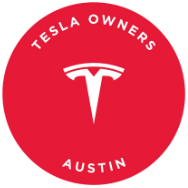With the launch of self-driving Teslas as Robotaxis in Austin just around the corner, many are left wondering how the teleoperators for these vehicles will actually work. The concept is simple – if the autonomous cars encounter any issues, a remote human teleoperator will step in to take control. However, the specifics of how this will function remain a mystery, with less than two weeks until the service goes live.
A recent sighting of a driver-free Tesla Model Y cruising around Austin’s South Congress Avenue, adorned with Robotaxi graphics, has sparked curiosity about the technology behind these vehicles. Tesla has been hiring remote teleoperators for some time, but the details of how they will intervene in case of emergencies are not clear. The City of Austin has deferred all inquiries about the system to Tesla, a company known for its lack of transparency and communication with the public.
As reported by Wired, the autonomous vehicle industry has yet to define “teleoperations,” adding to the confusion surrounding Tesla’s Robotaxi service. Remote driving presents numerous technical challenges, including issues with connectivity and latency. The stability of the wireless connection between the teleoperator and the vehicle is crucial for successful intervention, but network disruptions and latency problems could potentially pose significant risks.
Elon Musk has stated that the initial fleet of Robotaxis in Austin will be limited to around 10 or 12 vehicles operating in a specific area. While a wireless connection in this controlled environment may seem feasible, the lack of information about the technology raises concerns about its reliability. As the launch date approaches, many are eagerly awaiting more details on how Tesla’s teleoperators will ensure the safety and functionality of the Robotaxi service. Now, the company is looking to expand its reach and presence by heading to France. This move comes as part of Polestar’s strategy to increase its market share and offer its electric vehicles to a wider audience.
The decision to move to France is significant for Polestar, as it marks a new chapter in the company’s growth and evolution. By establishing a presence in France, Polestar is positioning itself to tap into the European market and compete with other electric vehicle manufacturers in the region.
France is a key market for electric vehicles, with the government offering incentives and subsidies to encourage the adoption of EVs. By setting up operations in France, Polestar is not only gaining access to a lucrative market but also positioning itself as a key player in the country’s transition to electric mobility.
Moreover, the move to France is a strategic one for Polestar, as it allows the company to diversify its production and distribution channels. By establishing a presence in France, Polestar can benefit from the country’s strong automotive industry and skilled workforce, further enhancing its manufacturing capabilities and expanding its global reach.
Overall, Polestar’s decision to head to France is a bold and strategic move that underscores the company’s commitment to growth and innovation in the electric vehicle market. With this expansion, Polestar is poised to solidify its position as a leading player in the industry and capture new opportunities in the evolving landscape of electric mobility.
Tesla’s Robotaxi service is set to launch in Austin, Texas, with CEO Elon Musk promising that the service will be fully operational by the end of the year. This means that residents of Austin could soon be able to hail a self-driving Tesla vehicle to take them to their desired destination. The service will initially be available to Tesla owners who have purchased the Full Self-Driving package, but Musk has hinted that it may eventually be opened up to non-Tesla owners as well.
But what does this mean for the future of transportation? Will Robotaxis become the norm, replacing traditional ridesharing services like Uber and Lyft? And what impact will this have on the automotive industry as a whole?
One thing is for sure: Tesla is betting big on autonomous driving technology. The company has been a pioneer in this field, developing its own proprietary self-driving software and hardware. Musk has even gone so far as to claim that Tesla will have a fleet of one million Robotaxis on the road by the end of 2022.
Of course, there are still many challenges to overcome before autonomous vehicles become a common sight on our roads. Safety concerns, regulatory hurdles, and public acceptance are just a few of the obstacles that must be addressed. But if Tesla can successfully navigate these challenges, the future of transportation could look very different indeed.
So, what are your predictions for Tesla’s Robotaxi service? Will it revolutionize the way we get around, or will it be just another flashy tech experiment? Only time will tell, but one thing is certain: the future of transportation is looking more autonomous than ever.

